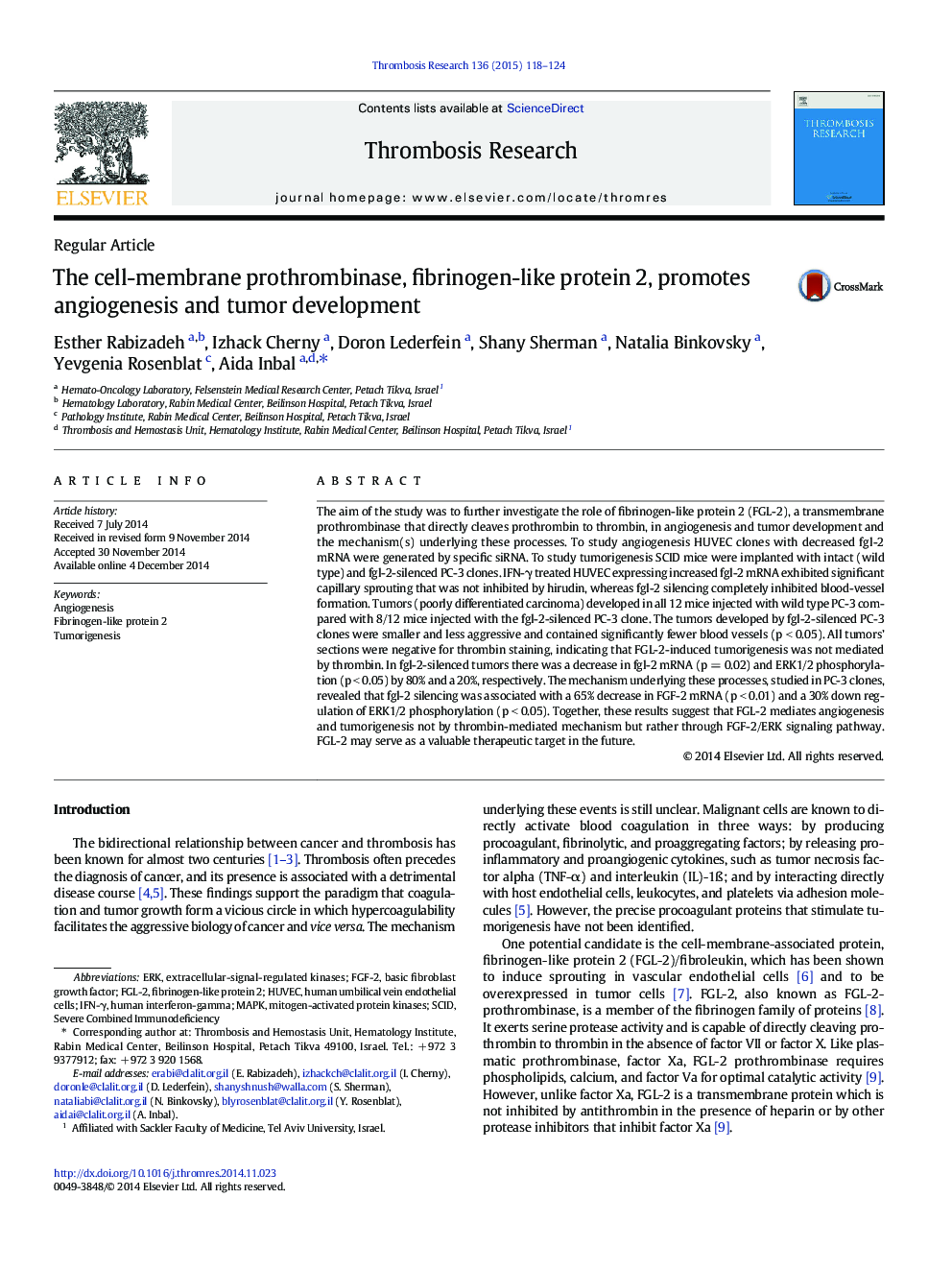| کد مقاله | کد نشریه | سال انتشار | مقاله انگلیسی | نسخه تمام متن |
|---|---|---|---|---|
| 6001157 | 1182945 | 2015 | 7 صفحه PDF | دانلود رایگان |
- Fgl-2 silencing in HUVEC hindered proliferation and tube array formation in vitro.
- Injection of fgl-2 silenced PC3 cells in mice resulted in decreased tumor growth.
- FGL-2 activity is not thrombin-mediated but associated with FGF-2/ERK axis.
The aim of the study was to further investigate the role of fibrinogen-like protein 2 (FGL-2), a transmembrane prothrombinase that directly cleaves prothrombin to thrombin, in angiogenesis and tumor development and the mechanism(s) underlying these processes. To study angiogenesis HUVEC clones with decreased fgl-2 mRNA were generated by specific siRNA. To study tumorigenesis SCID mice were implanted with intact (wild type) and fgl-2-silenced PC-3 clones. IFN-γ treated HUVEC expressing increased fgl-2 mRNA exhibited significant capillary sprouting that was not inhibited by hirudin, whereas fgl-2 silencing completely inhibited blood-vessel formation. Tumors (poorly differentiated carcinoma) developed in all 12 mice injected with wild type PC-3 compared with 8/12 mice injected with the fgl-2-silenced PC-3 clone. The tumors developed by fgl-2-silenced PC-3 clones were smaller and less aggressive and contained significantly fewer blood vessels (p < 0.05). All tumors' sections were negative for thrombin staining, indicating that FGL-2-induced tumorigenesis was not mediated by thrombin. In fgl-2-silenced tumors there was a decrease in fgl-2 mRNA (p = 0.02) and ERK1/2 phosphorylation (p < 0.05) by 80% and a 20%, respectively. The mechanism underlying these processes, studied in PC-3 clones, revealed that fgl-2 silencing was associated with a 65% decrease in FGF-2 mRNA (p < 0.01) and a 30% down regulation of ERK1/2 phosphorylation (p < 0.05). Together, these results suggest that FGL-2 mediates angiogenesis and tumorigenesis not by thrombin-mediated mechanism but rather through FGF-2/ERK signaling pathway. FGL-2 may serve as a valuable therapeutic target in the future.
Journal: Thrombosis Research - Volume 136, Issue 1, July 2015, Pages 118-124
